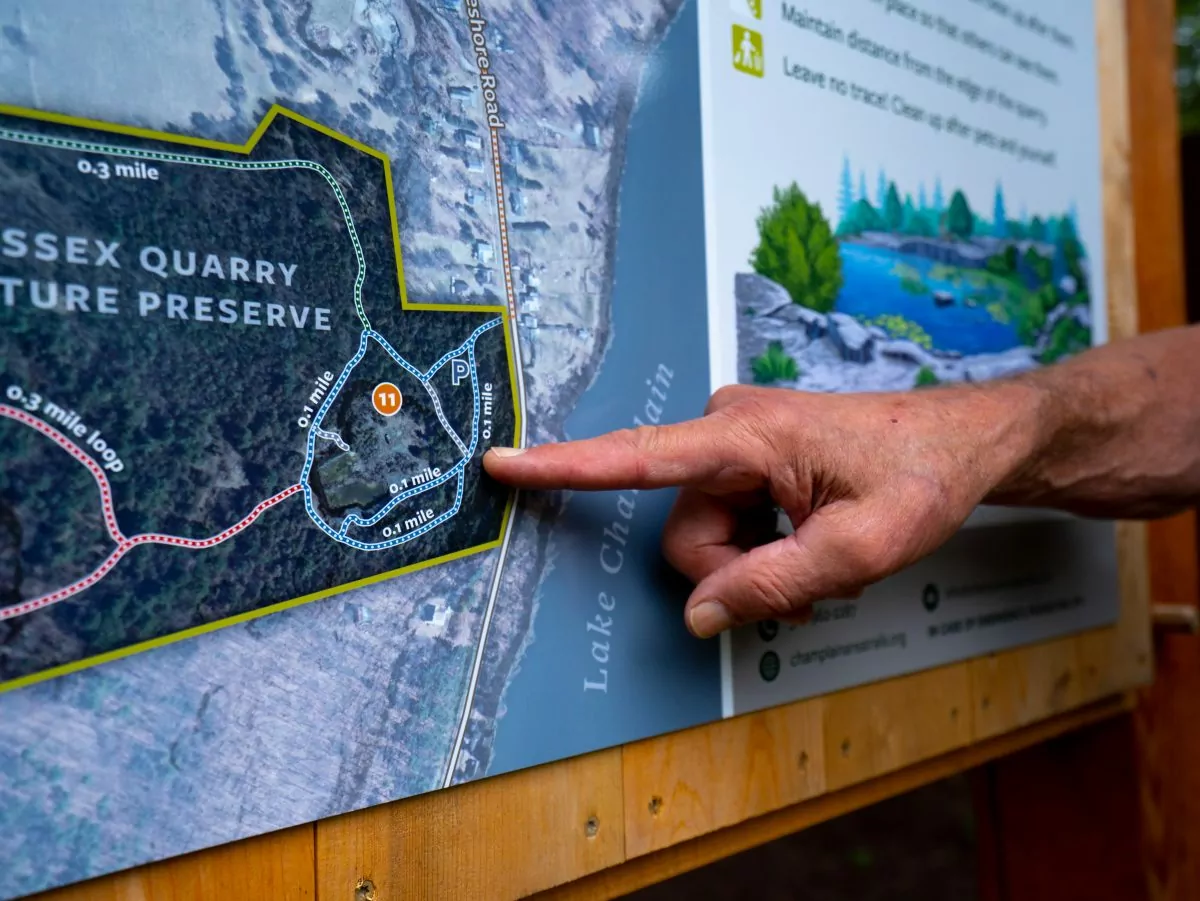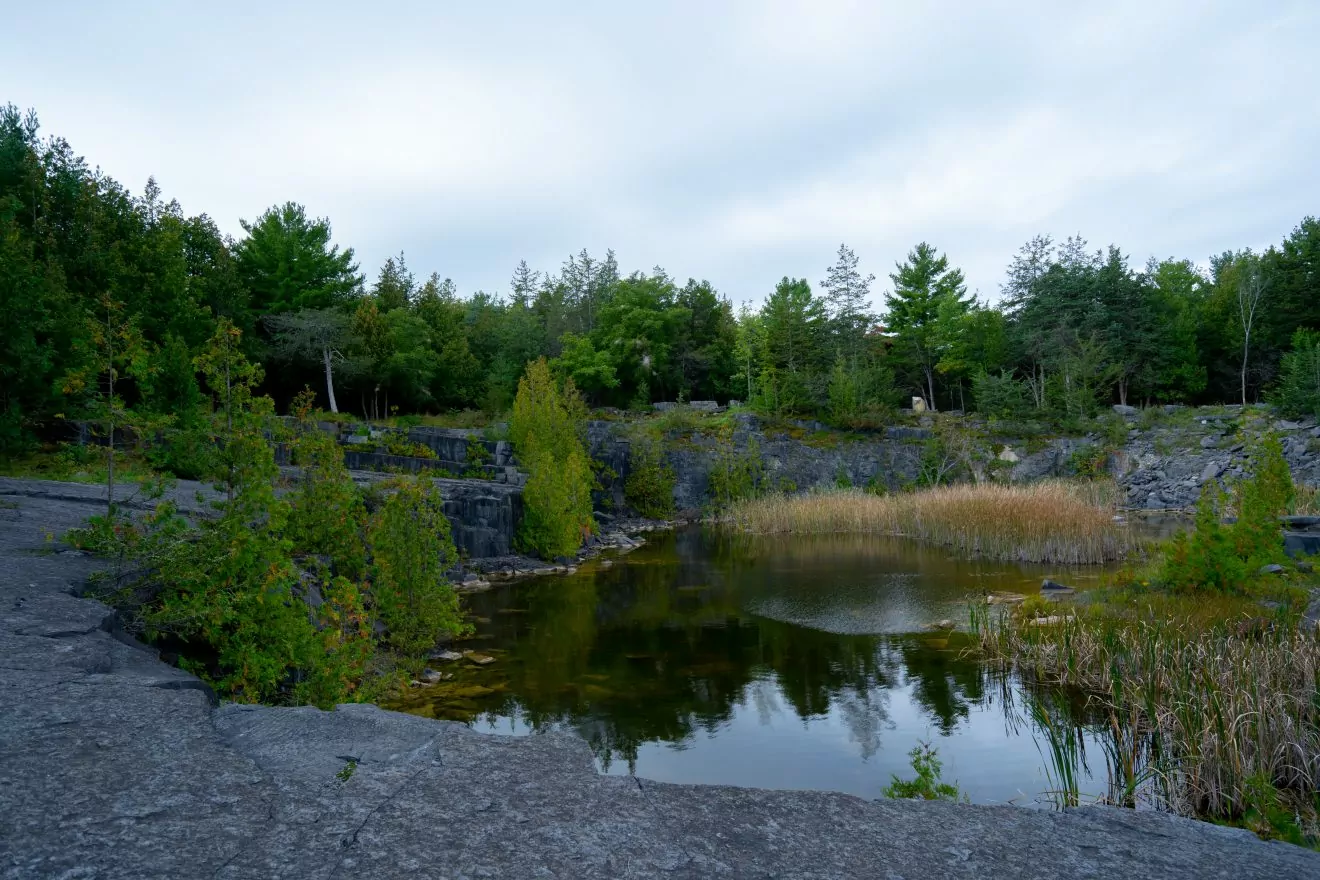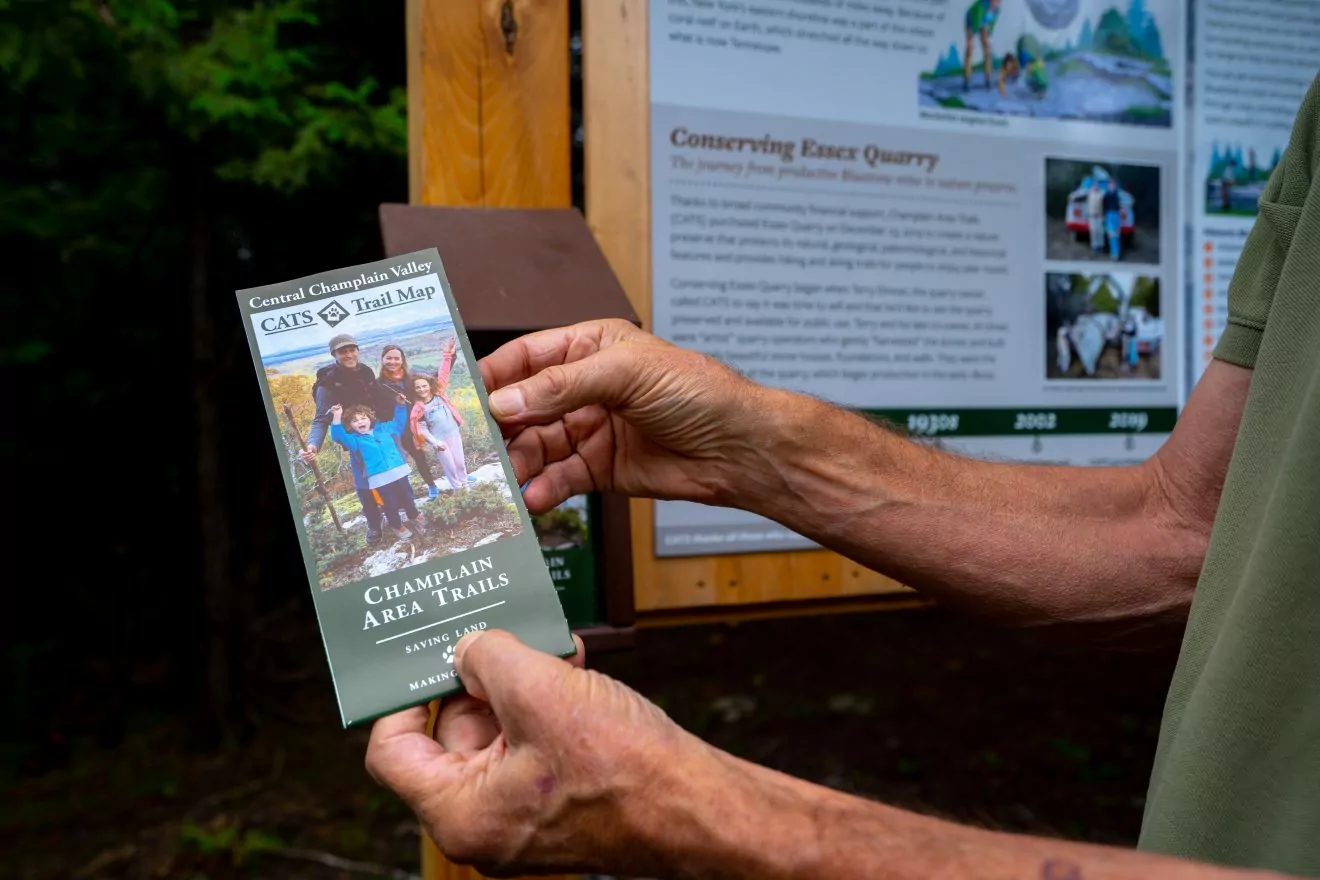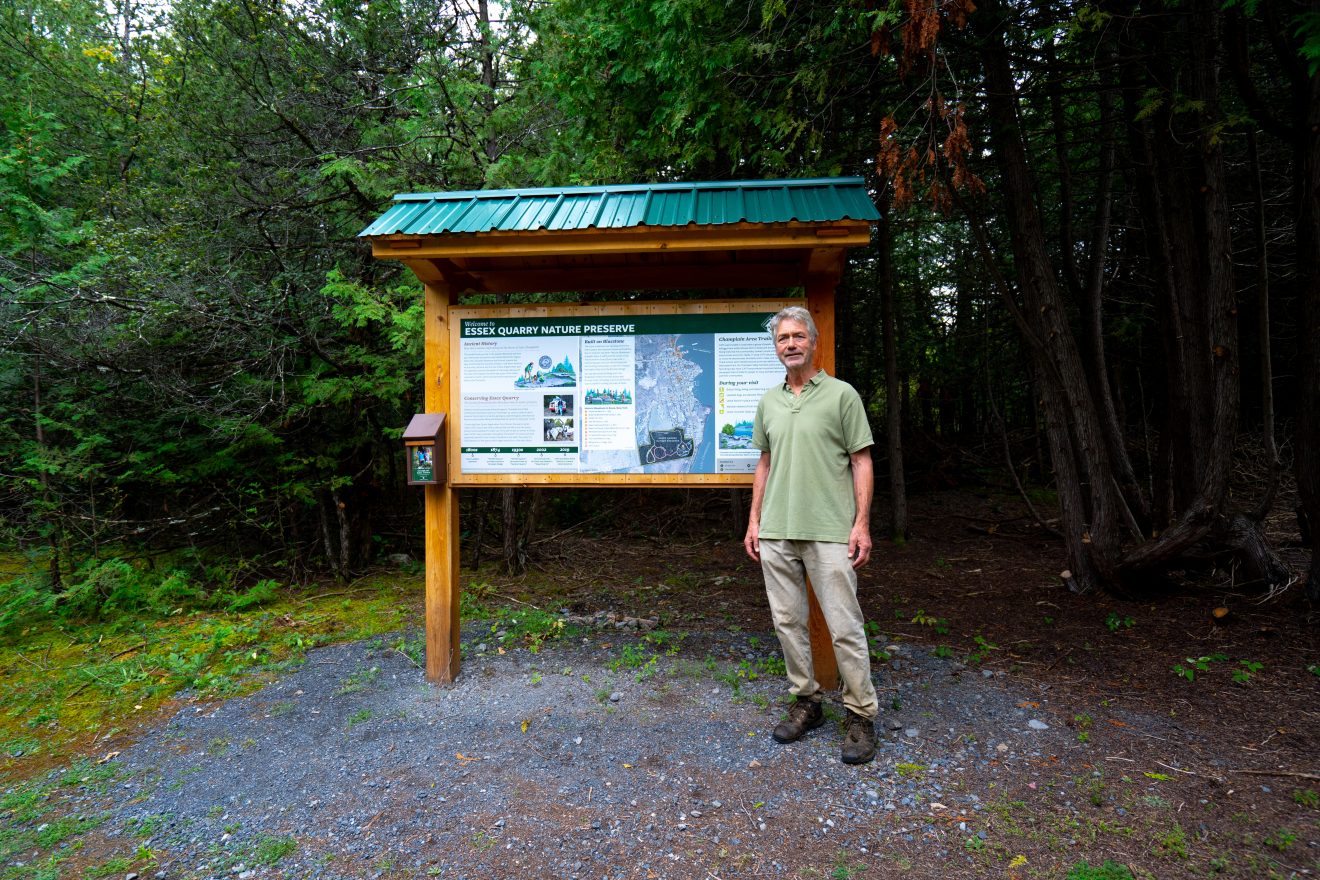How Hiking Trails are Made

When I’m on a hike, I tend to ponder a lot of questions. They range from mundane thoughts, like “how far am I from the summit” to introspective musings, such as “how do humans fit within the planet’s web of life?”. Yet, I rarely give a second thought to the trail I’m walking on.
As hikers, it’s easy to think about where a trail is taking us, but we rarely ask ourselves where the trail itself has been. That is until I met with Chris Marron, the executive director of Champlain Area Trails (CATS), a non-profit and accredited land trust created to conserve land and build trails in the Champlain region of the Adirondack State Park.
Chris is a wealth of knowledge in matters of both conservation and trail-building. Since 2009 when he helped found CATS, Chris has worked in the field and behind the scenes — building trails, fundraising, and managing land conservation and trail projects. So, I knew that he would be the perfect person to guide me down a metaphorical path toward discovering how trails are made.
Explore Your World with Award Winning Guides
The History of Trail Building
The earliest trails in the U.S. date back to those created by Indigenous communities for hunting, trading, warfare, and ceremonies. According to the Library of Congress, colonizers later converted these paths into established trails, wagon roads, paved roads, and even highways. Today, many of these ancient routes still exist under different names — like the Nuumu Poyo, better known as the John Muir Trail.
While native people developed foundational routes across much of the U.S., many of the standardized trails we recognize and hike on today were built in the 1920s and 30s. During this time, trail building reached a peak when federal programs like the Civilian Conservation Corps (CCC) and Works Progress Administration (WPA) aided conservation efforts in National Parks and provided a solution to the rampant unemployment among young men aged 18-25 caused by the Great Depression.
Trail building slowed during and after WWII but continues today by both public land programs, like the conservation corps, and private organizations, like CATS.
Finding a Route

I met Chris on a late summer morning at one of CATS’ latest projects — the Essex Quarry Preserve. This 35-acre nature preserve was previously the site of a limestone quarry where rock was mined for iconic projects like the Brooklyn Bridge and New York State Capitol Building. Now, it’s home to an extensive network of hiking trails.
As we began our hike, we walked along a wide and gentle path. Flickers of light peeked through the thick blanket of deciduous and evergreen trees above us. Less than half a mile in, the forest broke, opening to an expansive view of the limestone quarry and surrounding marsh. As I took in the landscape, I asked Chris my burning albeit indistinct question: “So, how are trails made?”
First, he and the CATS team decide the trail’s intended purpose. “Trails can be classified in a variety of ways,” Chris explains, “They range from primitive single track trails that require very little upkeep to multi-purpose trails that are used for a variety of activities ranging from mountain biking to hiking and even horseback riding.”
After the team determines the type of trail, trail builders hike through the property to survey land features and search for a natural route. They also look for areas that they should avoid due to ecological concerns, like fragile wildlife habitats.
As we traced the perimeter of the limestone quarry, Chris explained that while the same principles guide each project, finding a route is ultimately a unique experience every time. The process depends on the complexities of the terrain. Sometimes, the trail crew gets a head start because old logging or access roads can serve as a blueprint. In other cases, trail builders spend weeks or months planning the right location to add a switchback up a mountain. Chris mentioned that at times, you could walk onto a plot of land and see it covered in different colored flags from mapping and re-mapping potential routes.
In general, trail builders gravitate toward the most straightforward route along the path of least resistance, Chris explained. They also evaluate the land’s topography to account for water runoff. Good trail builders will cut trails so that rainfall flows off them to mitigate puddle accumulation.
But trail builders consider more aesthetic factors, too, like unique features or viewpoints they’d like to highlight. Sometimes, they opt for a different route to make the trail more challenging. Chris emphasized that CATS dedicates a significant amount of time to creating both easy and difficult routes that take hikers through the Champlain Valley’s fun and emblematic environments. Among the 40 new trails created by CATS, there is an accessible trail for everyone.
Building the Trail
We continued along the trail, moving deeper into the lush woods. “Once you decide the trail’s route, what happens next?”, I asked Chris.
Once trail builders map out and flag the route, CATS gathers volunteers to help clear branches and vegetation. Sometimes CATS employees prep the trail with power tools, like chainsaws, to clean up before volunteers start working. Volunteers use simple equipment like hand saws, shovels, and loppers to clear and build the new trail. They avoid breaking out the chainsaws when volunteers are on-site so the team can converse and build community while working. Sometimes CATS will use power tools, like lawnmowers or weed eaters, but only on projects that require one or two volunteers.
Next, once excess vegetation and brush is cleared, the crew begins side-cutting uneven ground to level the trail. Depending on the trail, builders may then bring in extra features, such as rocks to form steps or planks to cross wet sections. Occasionally, crews have to move heavy objects in areas that aren’t accessible via motorized vehicles. In these cases, they’ll use equipment like log carriers, sturdy poles with metal clasps that pick up heavy logs. Crews can also use a canvas carrier to move heavy objects, like boulders or logs. These require a large team of six to eight people. First, the team rolls the object onto the canvas and then they all lift and move it together.
While these techniques work when necessary, CATS avoids cutting routes that require transporting heavy objects. Instead, they work with the natural topography and land features, preserving and embracing the existing landscape. I thought back to earlier on our hike when we encountered a natural amphitheater of large limestone boulders. The crews cleared surrounding brush so that in the future, groups could use the area as a gathering spot on guided nature walks. As trail builders let the forest’s natural features guide the building process, they maintain a fluid communication with the land.
But trail building decisions aren’t all intuitive, and some are not without controversy. In lush deciduous forests, like those that blanket the Northeast, trail builders have to decide if they will rake vegetation off of the trail or leave it in place. “Raking the trail makes it easier for hikers to follow, but on the flip side, leaving the natural vegetation provides a barrier to soil erosion,” Chris explained.
Evaluating the Environmental Impact of Trails

As we followed the trail, Chris pointed out placards adorned with facts and figures about wildlife, the ecosystem, and its history — and now the trail was part of that story. “How do you think building trails impacts the environment?” I asked.
For CATS, Chris explained, environmental concerns shape the creations of each trail. When properly planned, trails can further conservation efforts. For example, switchbacks can mitigate erosion by changing the direction and speed of sediment and water that flows down a trail. By slowing the speed of runoff, more rainfall filters into the soil and less flows into — and pollutes — nearby waterways.
CATS also plans routes to divert foot traffic away from critical wildlife areas. “Bobcats and other predators often hang out on south-facing cliffs or ledges.” Chris continued, “We want to respect wildlife by creating trails that won’t impact them very much. As a result, we look for areas with high concentrations of wildlife, and then determine if the trails will impact them. If so, we try to avoid those areas.”
Furthermore, CATS will establish rules for trail users to protect critical wildlife habitats. Chris worked on one trail with the Northeast Wilderness Trust that traversed past beaver ponds, a critical stopover point for migrating waterfowl. To preserve habitat health, they banned dogs from the trail to avoid disrupting the waterfowl.
All Inclusive Backpacking Adventures
Trails as Catalysts for Conservation
Proper planning is one way trails protect local flora and fauna, but Chris also envisions CATS supporting long-term conservation efforts.
“CATS came into existence because the Champlain Valley is next to the high peaks region of the Adirondack State Park, which has tremendous hiking trails and wilderness areas, ” Chris remarked. Before CATS, most people who hiked in the Champlain Valley went to the high peaks region. Chris helped start CATS to address the gap in accessible hiking trails in the Champlain Valley so that locals and tourists could experience the rich and biodiverse ecosystems in the region. Twelve years later, CATS has built over 60 miles of trails and established nearly 1000 acres of new conservation lands.
“[We] want to conserve more land, and trails help people develop a relationship with the land, which then increases public support for conservation projects,” Chris explained, gesturing to the trail. “You know, in the Champlain Valley, there’s a rare natural community and geology here,” Chris said. His voice enlivened with wonder and I listened intently. He told me how millions of years ago, Vermont and New York were on separate continents. Ancient oceans covered the land we were standing on, which was part of the world’s oldest coral reef. If you look carefully, you can still find traces of 140 million-year-old ammonite fossils embedded in the quarry’s rocks.
Chris was painting a clear picture: natural wonders exist all around us. Without accessible ways to experience these places, we may never know the unique histories of the land or have the opportunity to develop a relationship with these wild spaces.
Ongoing Trail Stewardship
We arrived back at the trailhead, but I still had questions for Chris. I wanted to know a hiker’s role within the lifespan of a trail — from its creation to upkeep. “What impact do we have, and how can we be good stewards to the land?” I implored.
“Hiking has an impact, everything has an impact,” Chris says. Following Leave No Trace principles while hiking — like sticking to the designated route — can help to preserve the environment and trail. Small practices, like walking through a wet or muddy section of the trail instead of around it (which widens the trail) and not taking shortcuts up a switchback, go a long way.
But if hikers can’t follow the trail, it’s hard for them to have good trail etiquette. “So again, that’s where trail planning comes in,” he told me. Chris explained that the Essex Quarry Preserve and similar trails only required minimal maintenance. The trail crew walks through the woods a couple of times a year, especially after significant events like windstorms, to pick up fallen branches or cut up downed trees. However, certain trails, like those with high vegetation could require maintenance every two weeks.
Volunteers play a big part in maintenance efforts. Chris explained that he hopes to implement “Trail Adopter” programs, in which people choose a trail and return to it regularly to be CATS’ eyes and ears over a long period of time.
Connecting With Your Local Trails

Trails are so much more than paths we walk along in the wilderness. They are places of connection that nurture people’s relationships to their surrounding ecosystems. And the impact of trails ripples far beyond the short (or long) walks we take on them. They provide recreational opportunities for local communities, protect wildlife habitat, and enhance regional conservation efforts — all of which comes down to good trail design. Thanks to Chris, I walked away with a deeper understanding of how trails are made and the people that work hard to maintain them.
For a deep dive into how trails are made check out the Trail Construction and Maintenance Notebook published by the Forest Service.



